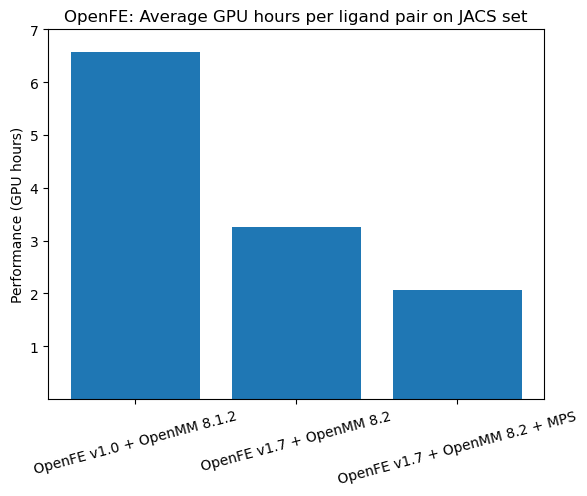We are pleased to announce the release of openfe version 1.7.0!
This release brings along some long-awaited features, notably including new Protocols (SepTop & ABFEs), and performance improvements.
Please see below for some highlights and see the Changelog for more details.
New alchemical simulation protocols
Separated Topologies
We include a new relative binding free energy protocol based on the Separated Topologies (SepTop) method, as defined by Rocklin et al. and Baumann et al.. Using SepTop, you can calculate the difference in binding free energy between two ligands by essentially performing two absolute binding free energy calculations simultaneously in opposite directions.
Crucially, this avoids the needs for creating a hybrid topology, making atom mapping unnecessary and allowing for scaffold hopping!
Please see our SepTop tutorial for a demonstration on how to use it! You can also read more about the method in our SepTop user guide entry.
Absolute Binding Free Energies
We also include a new Absolute Binding Free Energy (ABFE) protocol, based on a partial annhilation scheme. This method allows for the direct calculation of binding affinities by alchemically removing a ligand from its binding site.
Please see our ABFE tutorial and associcated ABFE user guide entry to see how to use the method.
Performance improvements through better default settings
We have updated our default settings to maximize the performance of openfe, leading to a ~2x performance improvement compared to the v1.0 release!
The figure below shows the average performance of a single thermodynamic cycle for a pairwise transformation using our relative binding free energy hybrid topology protocol. We see see a drop from ~6 hours to ~3 hours by switching our default settings and moving to OpenMM 8.2. This can be further improved by layering multiple simulation using the NVIDIA multi-processing service

These settings updates mostly involve moving away from overly conservative parameters to ones that are more widely used in production settings. These include:
- Switching from a cubic box to a dodecahedron box for solvation, avoiding excess waters.
- Increasing the replica exchange rate to 2.5 ps (from 1 ps), reducing performance losses linked to GPU context switches.
- Reducing the nonbonded cutoff from 1.0 nm to the OpenFF recommended value of 0.9 nm.
These new default settings were extensively validated on RBFE and AHFE simulations, showing little to no difference against the previous defaults.
Installing openfe v1.7.0
openfe is made available as a conda-forge package, or docker and singularity images.
Please see our installation instructions for details on how to install openfe.